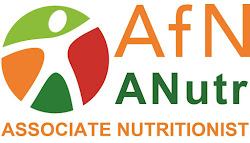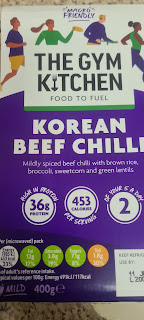Your Friendly Guide to Superfoods: Planning Delicious and Nutritious Meals Simplified
Have you ever wondered how to incorporate nutritious superfoods into your daily meals? Let's dive into the vibrant world of these nutrient-packed foods and discover how you can enjoy them in various delicious meals. Are you ready for your taste buds to explore a fun, flavorful journey?
Goji Berries
Aloe Vera
Avocados
Coconut oil
Coconut oil speeds up the metabolism and can actually help with weight loss. It is also incredibly beautifying and moisturizing for the skin and has antioxidant properties which protect against free-radical damage, keeping the skin youthful and healthy. Taken internally or externally coconut oil is a great ally for any beauty skin care regime. It also contains lauric acid, an anti-microbial fatty acid that kills bacteria, viruses and fungi.
Sweet potatoes
This superfood has a beta-carotene content that is
off-the-charts - providing 377 percent of your daily vitamin A needs per
103-calorie serving. In addition to promoting eye health, some research shows
beta-carotene may help prevent cancer both by neutralizing free radicals and by
promoting communication between cells.
Brussels sprouts
Containing just 36 calories, one serving of four brussels
sprouts provides 100 percent of your daily vitamin C. This promotes skin cell
turnover and collagen formation.
Cranberries
At just 44 calories per cup, cranberries are high in fibre
and help lower levels of LDL ("bad") cholesterol and may even help
boost levels of HDL ("good") cholesterol. Cranberries also supply
procyanidin, a phytonutrient that protects against urinary tract infections.
Baked apples
Apples provide the main supply of polyphenols - powerful
antioxidants that may help inhibit cancer cell proliferation and prevent the
oxidation of LDL cholesterol. Fibre content also contributes to apples'
cholesterol-lowering effect. One medium apple contains 80 calories.
Pumpkin
In addition to serving as an excellent source of eye-healthy
vitamin A, pumpkin also serves as a top source of alpha-carotene, an
antioxidant linked to lower lung cancer risk in several studies. One cup of
pumpkin, sliced into cubes, contains 30 calories.
Pecans
Though usually overshadowed by nut headliners like almonds and walnuts, pecans come out on top in terms of antioxidant activity. Like other nuts, pecans contain healthy mono- and polyunsaturated fats, which may contribute to their heart health benefits. But pecans are unique in their high amounts of naturally occurring gamma tocopherol - a unique form of vitamin E that may promote prostate and intestinal health. Pecans, like all nuts, are high in calories, containing 196 calories per ounce.
- Using convenient appliances such as slow cookers and microwaves can be a huge time saver when planning and preparing meals. There are many delicious and healthy recipes that can be started in the morning and left to cook all day in a crock pot or slow cooker. These are great choices for working families.
- When planning the meals for the week, it is a good idea to create a chart listing each day's menu and each days' schedule. Plan the quickest and easiest meals for the busiest days of the week. Get your family involved in creating the week's meal plan by asking for their input and noting everyone's favourite foods. It is still very important to eat healthy meals, so that (of course) does not mean eating pizza every night or having ice cream for dinner. But involving your spouse/partner or children in healthy recipe planning, you'll help to increase their interest in healthy eating right away.
- It is also a good idea to get your entire family involved in the preparation of the meals. Even children too young to cook can help by setting out the dishes, chopping vegetables, clearing the table and washing the dishes.
- Cooking large quantities of healthy food recipes - and freezing the leftovers - is a easy way to save time. Cooking large amounts of stews, soups, pasta, chili and casseroles can be a huge time saver. Making double and even triple batches of these staple foods, and freezing the leftovers for later use, is a great way to save both time and money.
- When freezing leftovers, however, it is important to label the containers carefully, using freezer tape and a permanent marker. Try to keep the oldest foods near the top to avoid having to throw away expired items.
- Stocking up on meats when they are on sale is another great way to use that valuable freezer space. Stocking up on such easily frozen foods as chicken, turkey, ground beef, steaks, roasts and chops is a great way to make your food dollar stretch as far as possible while still allowing you and your family to enjoy delicious healthy meals every day.
- Keeping a well-stocked pantry is as important as keeping a well-stocked freezer. Stocking the pantry with a good supply of staple items like canned vegetables, canned fruits, soup stocks and the like will make healthy recipe preparation much faster and easier.
- Stocking the pantry can save money as well as time. Grocery stores are always running sales, and these sales are a great time to stock up. Buying several cases of canned vegetables when they are on sale, for instance can save lots of money and provide the basic ingredients for many nutritious, easy to prepare meals.
- Examples of great staples to stock up on include whole grain cereals, pastas, tomato sauce, baked beans, canned salmon, tuna and whole grain breads. It is easy to combine these staples into many great meals on a moment's notice.
Your health is your wealth, so why not invest in it wisely? With this guide, you now have the tools to plan and enjoy meals packed with superfoods. Go on and experiment, make these nutrient powerhouses a part of your daily cuisine. The secret to long-term health may just lie in that delicious blueberry or that humble spinach leaf. And always remember, your meals should be as enjoyable as they are nourishing. Now, isn't that food for thought?




To be honest i always use Avocados, sweet potatoes and Aloe Vera. For me these are available in large quantities where i live and it gives me an easy access to get them. I always make sure to eat them on weekly basis so that i can get all the necessary nutrients needed. I love the idea of cooking together as a family and lebelling the left overd when freezing them, this is so helpful
ReplyDelete